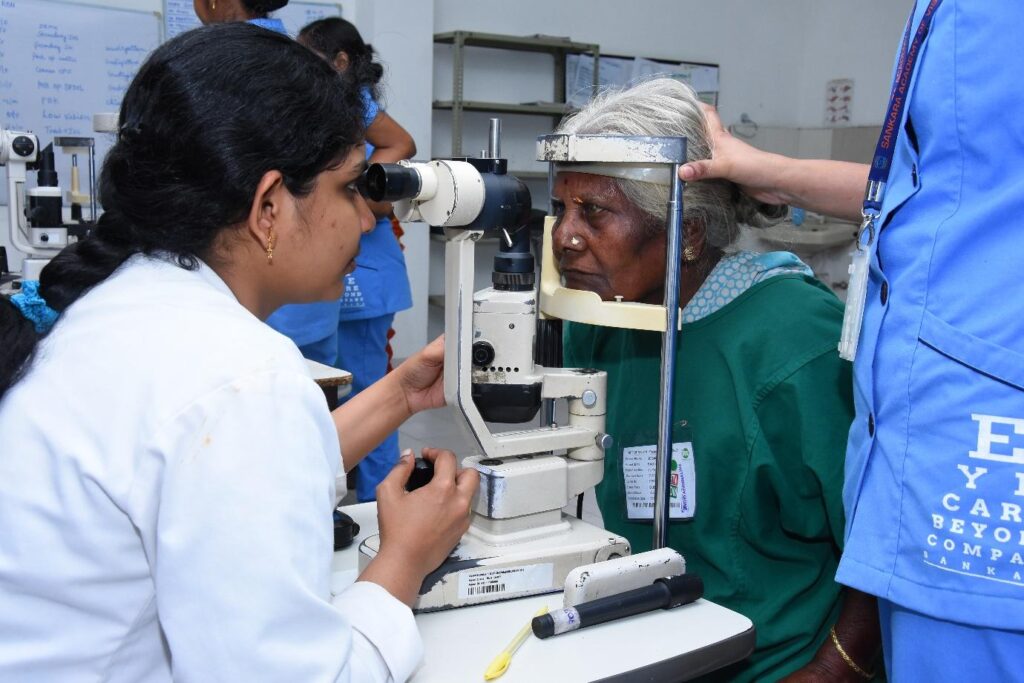In the early stages of a cataract, it can be difficult for a person to notice changes in their vision. People with cataracts often suffer from diplopia due to the clouding and blurring of the eyes caused by cataracts. Cataracts can blur, blur, or fade your vision over time. Blurred vision caused by cataracts greatly impairs vision at night.
At first, blurred vision caused by a cataract may only affect a small part of the lens of the eye, and you may not be aware of vision loss. As cataracts make your vision increasingly blurry, your vision will deteriorate to the point that you will no longer be able to see or drive at night.
When you develop a cataract, the lens of your eye becomes cloudy and your vision appears blurry. Due to the clouding of the cataract projecting onto the lens of the eye, looking through a diseased lens with a cataract can feel like looking through a fog. When the lens hardens and becomes cloudy, people with cataracts may notice halos and lights appear in their field of vision.

Cataracts form as a result of the natural ageing process when the initially clear lens of the eye becomes cloudy, hard and hard. With age, cataracts may develop slowly as the lens becomes less flexible. However, in the vast majority of cases, cataracts persist because the lens of the eye becomes less elastic and transparent with age.
Cataracts usually appear in both eyes, but one eye may be more serious than the other. Cataracts in one eye can be more severe than in the other, causing vision differences between the eyes. As we said before, cataracts are characterized by clouding of the eyes and vision.
As the cataract enlarges, it can further cloud the lens of the eye and distort the light passing through the lens. Cataracts develop so quickly that the lens may appear milky or brown and opaque. Eyes with mature cataracts will be milky or brown and dull and can be seen in other people’s eyes or their own eyes in the mirror. If the cataract has progressed, you may see a grey or white film over your eye when you look in the mirror.
The effects of cataracts can worsen over time because you may not see at all unless you seek help from an eye doctor. At first, your vision may only be partially blurred, but the area may enlarge over time if your cataract is untreated.
If the lens is clouded by a cataract, the light is scattered so that the lens can no longer focus correctly, causing vision problems. Clouding of the lens leads to diffraction of light entering the eye. If a cataract darkens the lens of your eye rather than blurring or darkening it, you may need more light to perform your activities, especially at dawn, dusk, or night.
When located at the back of the lens, a cataract makes it difficult to read or see light at night. A cataract prevents light from passing through the lens, making it difficult to see. A posterior subcapsular cataract begins at the back of the lens, blocking the path of light and often interfering with reading. A posterior subcapsular cataract occurs when an opaque area develops on the back of the lens of the eye within the light path.
Cataracts are caused by a build-up of proteins that cloud the lens of the eye, which can lead to blurred vision and eventually blindness. Blurred vision in cataracts occurs due to the buildup and accumulation of proteins in the lenses of the eyes that prevent light from reaching the retina. Several eye conditions can cause blurry or hazy vision, dimming of lights or colours, sensitivity to light, problems with night vision, and cataracts are one of them.
If you have blurred or blurred vision, especially when driving at night, you may need to see a doctor for cataract diagnosis and treatment. You will most likely have an annual eye exam, but if you are young, have an underlying condition that causes cataracts, or have rapidly developed cataract need to see an eye doctor every six months. If you have cataract symptoms, see an ophthalmologist (eye doctor) for a full examination.
While glasses can help cataract patients maintain their vision as symptoms progress, you will still need regular eye examinations to evaluate for cataract development.

As the editor of the blog, She curate insightful content that sparks curiosity and fosters learning. With a passion for storytelling and a keen eye for detail, she strive to bring diverse perspectives and engaging narratives to readers, ensuring every piece informs, inspires, and enriches.









